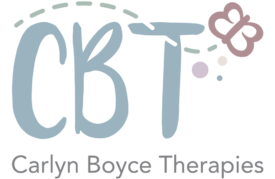
What is EMDR?
EMDR is a type of therapy that helps people recover from the effects of trauma, it is different to other traditional talking therapies as it focuses less on discussing the details of the traumatic event(s). When someone experiences trauma/PTSD they experience such strong emotions as the brain's normal function of processing can be interrupted. This means that memories of the trauma can be stuck and the original images and emotions, sounds and smells, associated with the memories will remain strong. EMDR aims to help the brain unstick and properly process the memory of the trauma so that it's no longer as intense. It can be delivered over video call or face to face, as I only deliver remote therapy, it will be delivered via Microsoft Teams/ another secure online video platform.
I will help you with your distressing/ traumatic memories and process them. This should make them less vivid. This can help stop the memories being triggered as frequently and you can also reduce the emotional response that you experience when the memories are triggered. Over time you should also experience a reduction in symptoms such as flashbacks, intrusive thoughts and images and anxiety. EMDR can also be used with a variety of common mental health problems, detailed above.
In traditional EMDR therapy, a series of bilateral eye movements or rhythmic stimulation is used while the client focuses on distressing memories or thoughts. However, other forms of bilateral stimulation can also be used. One such method is knee tapping, which involves alternately tapping or gently knocking on your knees with each hand. This technique mimics the bilateral stimulation of traditional EMDR, helping to engage both sides of the brain.
Another technique is Butterfly Hugs, a self-soothing method in EMDR therapy. To use Butterfly Hugs, you cross your arms over your chest, placing your hands on your shoulders or upper arms, and then gently tap or hug yourself alternately, like giving yourself a hug. This alternating tapping helps with emotional regulation and processes distressing memories or emotions in a similar way to traditional EMDR techniques.
Want to know more about EMDR? Check out this helpful worksheet:
What is EMDR?: https://www.getselfhelp.co.uk/docs/EMDR.pdf
If you want to start therapy, book an appointment with me, I look forward to hearing from you.
